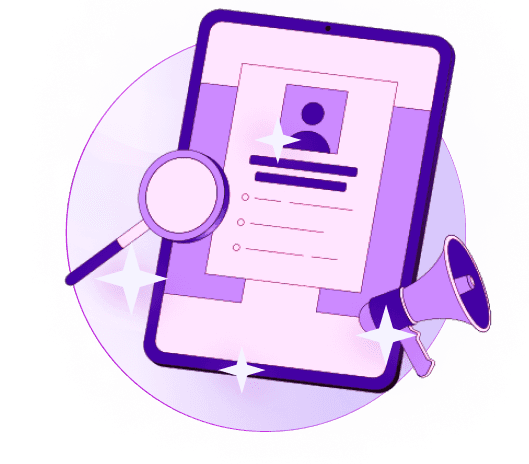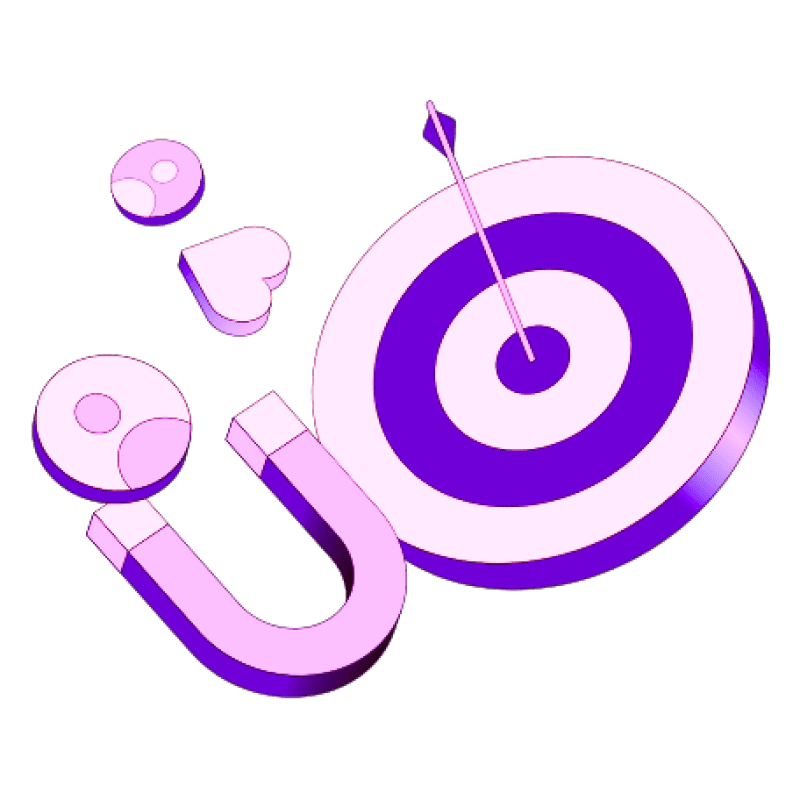Blogs
Articles

How to Optimize Waterfall Enrichment Cost for Better B2B Data in 2025
Here's a surprising fact: you can only get verified contact details for 312 prospects out of 800 qualified leads.
The numbers tell a clear story - single-source enrichment tools leave almost 60% of qualified prospects out of reach due to systematic blind spots. B2B companies cannot prioritize waterfall enrichment costs over prospect accessibility in today's competitive market.
This piece will show you practical ways to optimize your waterfall enrichment costs while getting the best quality B2B data.
Let's take a closer look at finding the right balance between cost-efficiency and data excellence.
Understanding Waterfall Enrichment and Its Cost Drivers
Waterfall enrichment has changed the game in B2B data acquisition strategies. You need to understand its basics to make the most of this approach.
What is waterfall enrichment?
Waterfall enrichment is a step-by-step data enrichment method that gets information from multiple providers in a specific order. This approach differs from traditional single-source enrichment. It asks various data vendors one after another until it finds the needed information or runs through all sources.
The system works just like water flowing down steps. When one provider can't fill data gaps, it moves to the next one automatically. This flow gives you a full picture while being quick and thorough in completing contact or company profiles.
Waterfall enrichment helps you find vital B2B data points such as:
Verified email addresses and phone numbers
Current job titles and company information
Firmographic and technographic details
Funding information and company size
The process stops as soon as it finds valid data. This prevents extra queries and saves your valuable credits.
Why single-source tools fall short
Teams using traditional contact enrichment tools can only access their own databases. This creates blind spots when prospects aren't in their specific collection. Single-source tools have these limits:
Coverage gaps in international markets
Missing niche sectors due to specialization
Limited decision-maker findings
Different levels of database freshness
These tools only achieve 50-60% match rates, which means you can't reach almost half your target prospects. The best single-vendor solutions only reach 55% enrichment rates.
How provider sequencing affects cost
The order of provider queries makes a big difference in overall enrichment costs. Smart provider sequencing starts with economical or highly accurate sources before moving to pricier options.
Clay's approach shows this well. It uses providers that need fewer credits first (1 credit) and moves to higher-credit options (3-10 credits) only when needed. You pay for extra lookups only when necessary because credits are used only when a provider returns information.
Provider sequencing creates a cost-saving strategy. The system stops once it finds valid data. This method helps waterfall enrichment achieve 80%+ contact discovery rates compared to 40-50% from single-source tools, while keeping per-contact costs down.
Common Cost Pitfalls in Waterfall Enrichment
Waterfall enrichment comes with cost challenges that can drain your budget without proper management. You need to understand these pitfalls to optimize your enrichment expenses.
Over-querying low-yield providers
Teams waste valuable credits by repeatedly querying providers that rarely deliver results. This happens because organizations can't see their vendor performance metrics. Your spending on low-yield sources will continue without tracking which providers deliver results.
Premium providers that charge regardless of results create a bigger problem. To name just one example, providers like Global Database charge full credits for every enrichment run, even without finding data. Costs can rise quickly without proper tracking and usage caps.
Lack of provider prioritization
Poor sequencing of data providers is one of the most overlooked expense factors. Your waterfall sequence might query expensive sources first instead of starting with economical options when it's not optimized.
Providers that worked well before might deliver less accurate results as time passes. Your system will keep sending requests to this now-weaker vendor first if it uses a fixed order. This wastes both time and credits, creating a double penalty - you pay more for worse data.
Manual workflows and hidden labor costs
Manual processes around data enrichment create one of the most important yet underestimated expenses. Bad data costs US companies between $2.5-3 trillion annually. Much of this comes from simplified processes.
The hidden costs include:
Productivity drops from rework on activities based on inaccurate data
Time spent managing multiple vendor relationships and platforms
Less innovation as teams handle repetitive tasks instead of strategy
Cross-team problems from contradicting data sources
Manual processes create bottlenecks that limit new opportunities and slow down response times. These problems grow as your business scales, limiting your ability to handle higher volumes.
Strategies to Optimize Waterfall Enrichment Costs
B2B data enrichment costs can drop significantly while data quality improves with the right strategic approaches. Let's look at four proven methods that will help you optimize your enrichment investment.
Use intelligent provider sequencing
The foundations of economical waterfall enrichment start with proper sequencing. Your provider with the highest match rate should come first to catch most data upfront and avoid unnecessary lookups. Detailed tools should take priority to minimize redundant API calls.
This strategic ordering helps you:
Place economical providers early in the sequence
Save premium services for specific needs
Track provider performance regularly
Move providers up your sequence if they deliver excellent data. You should remove or demote sources that rarely contribute valuable information.
Set query limits and fallback rules
Your enrichment costs stay in check with protective measures against excessive queries. The enrichment software should use conditional logic that triggers secondary enrichments only when primary sources miss specific fields.
Your existing quality data needs protection through rules that prevent overwriting verified information. This approach saves you money by not replacing good data with potentially inferior alternatives.
Utilize usage-based pricing models
Usage-based pricing models let you start small and expand as needed. B2B SaaS companies have doubled their adoption of these models in the last five years.
Hybrid pricing approaches work best when they combine usage-based elements with traditional subscriptions. About 46% of companies choose this path. The flexibility matches costs to value received and helps expand market reach.
Automate enrichment with API workflows
Employee time for development and maintenance of manual enrichment systems costs between $1,000-$10,000. API workflow automation offers a better solution.
Tools like Persana.ai make waterfall enrichment easier by eliminating multiple subscription management, billing cycles, and credit systems from providers of all sizes. These solutions connect directly to your CRM and create efficient processes without coding requirements or maintenance issues.
These optimization strategies will help you get better B2B data while keeping your enrichment processes cost-efficient.
Choosing the Right Tools for Cost-Efficient Enrichment
B2B data enrichment tool selection depends on several key factors that affect both results and costs.
Compare top enrichment software by pricing model
The market has pricing structures that work for different business needs:
Subscription-based models (like ZoomInfo and Clearbit) charge flat monthly/annual fees whatever the usage
Credit-based systems bill for each data point enriched, with prices varying by provider
Per-record pricing involves paying for individual data records, which add up quickly for large datasets
Enterprise pricing lets you customize but needs quotes
A Forrester study shows 70% of businesses prefer customizable pricing models that adapt to their specific needs. ROI calculations should include both direct costs and hidden expenses like data integration and maintenance.
Evaluate provider network size vs. cost
Big provider networks might look good, but quality beats quantity. Clay links to over 75 data providers through waterfall enrichment. SMARTe provides excellent mobile coverage in global markets.
Companies that use data enrichment tools see their sales productivity jump by 25% and sales cycles shrink by 15%. These results make the right tool worth the money despite what you pay upfront.
Look for built-in verification and deduplication
Data accuracy hits your bottom line hard—bad data costs companies $12.90 million yearly. Tools that verify and remove duplicate records save substantial money over time.
Consider CRM integration and automation support
Your tool should work smoothly with existing CRM systems. Native integrations with platforms like Salesforce and HubSpot help you avoid manual work.
Automated enrichment tools like Persana.ai help you avoid managing multiple subscriptions and credit systems from different providers. These solutions connect directly to your CRM and need no coding, which makes maintenance easier.
Conclusion
Waterfall enrichment provides a crucial solution for companies looking for high-quality B2B data in 2025. This piece shows how single-source enrichment tools create major blind spots that leave nearly 60% of qualified prospects unreachable. Sales teams waste valuable time and resources when they struggle with incomplete data.
Advanced waterfall enrichment has changed this completely. Your team can achieve 80%+ contact discovery rates by using the strategic approaches covered here. Smart provider sequencing lets you start with budget-friendly sources before moving to premium options. On top of that, it prevents unnecessary lookups by setting query limits while protecting your existing quality data.
Your enrichment strategy needs the right tools to work well. Usage-based pricing models give you flexibility that arranges costs with value received. API workflows streamline processes that usually cost thousands in employee time. These techniques cut expenses and boost your data quality substantially.
Companies that use these practices see remarkable improvements in pipeline generation and campaign effectiveness. Sales productivity increases by approximately 25% while sales cycles shrink by 15%, showing clear returns on investment.
Today's competitive environment demands attention to your B2B data strategy. Poor data quality costs sales representatives one full workday per week - time they could spend closing deals. Making your waterfall enrichment costs more efficient gives your team the complete, accurate data they need to succeed.
Key Takeaways
Waterfall enrichment is essential for B2B success in 2025, as single-source tools leave 60% of qualified prospects unreachable while advanced waterfall systems achieve 80%+ contact discovery rates.
• Start with intelligent provider sequencing - Place highest match-rate and cost-effective providers first to minimize unnecessary API calls and reduce per-contact costs
• Implement protective query limits and fallback rules - Set conditional logic to prevent over-querying low-yield providers and avoid overwriting verified data with inferior alternatives
• Choose usage-based pricing models with automation - Hybrid pricing approaches offer flexibility while automated API workflows eliminate $1,000-$10,000 in manual development costs
• Prioritize built-in verification and CRM integration - Tools with native deduplication prevent the $12.90 million annual cost of bad data while seamless CRM connections streamline workflows
• Focus on ROI over provider quantity - Companies using optimized enrichment see 25% increased sales productivity and 15% shorter sales cycles, making strategic tool selection crucial.

Create Your Free Persana Account Today
Join 5000+ GTM leaders who are using Persana for their outbound needs.
How Persana increases your sales results
One of the most effective ways to ensure sales cycle consistency is by using AI-driven automation. A solution like Persana, and its AI SDR - Nia, helps you streamline significant parts of your sales process, including prospecting, outreach personalization, and follow-up.



